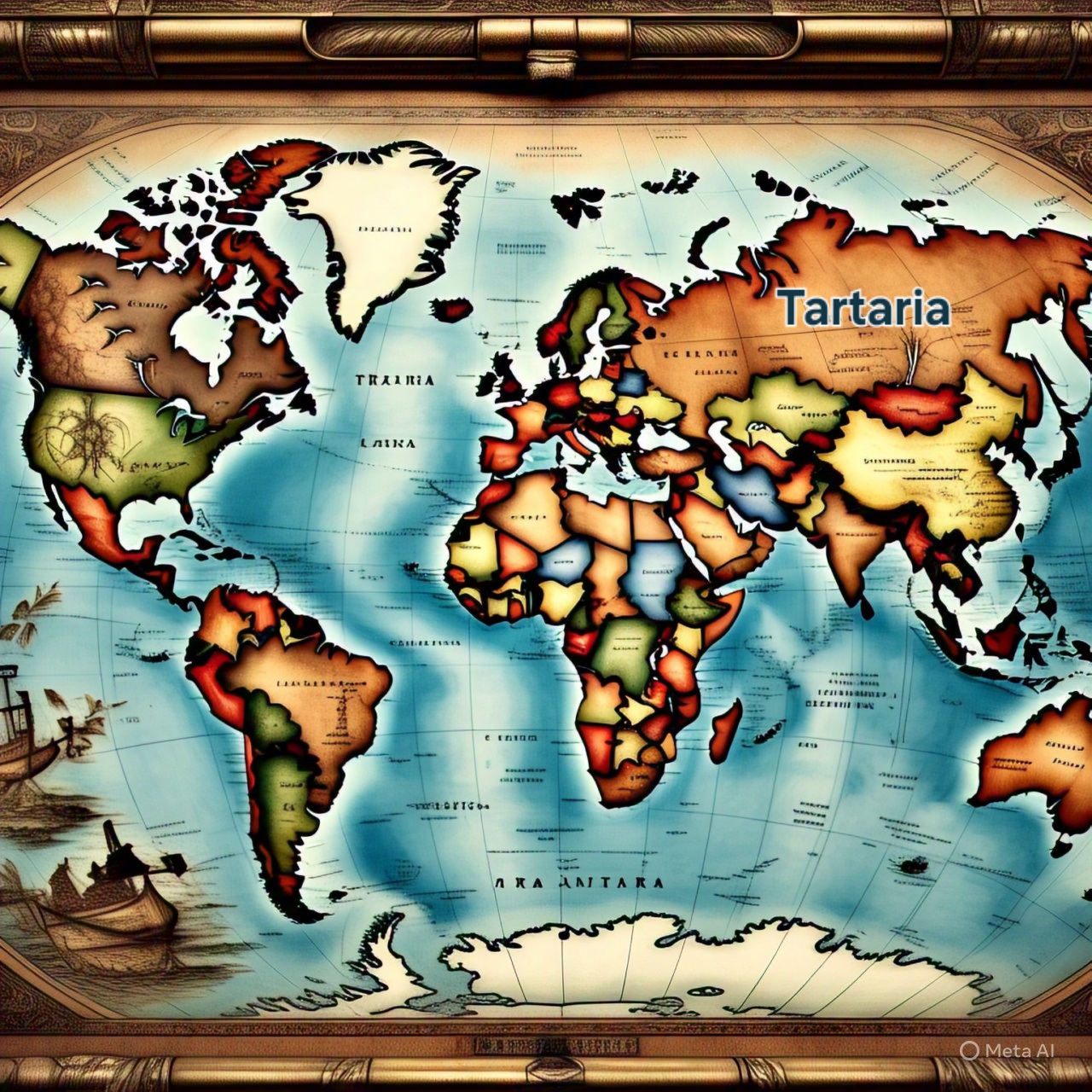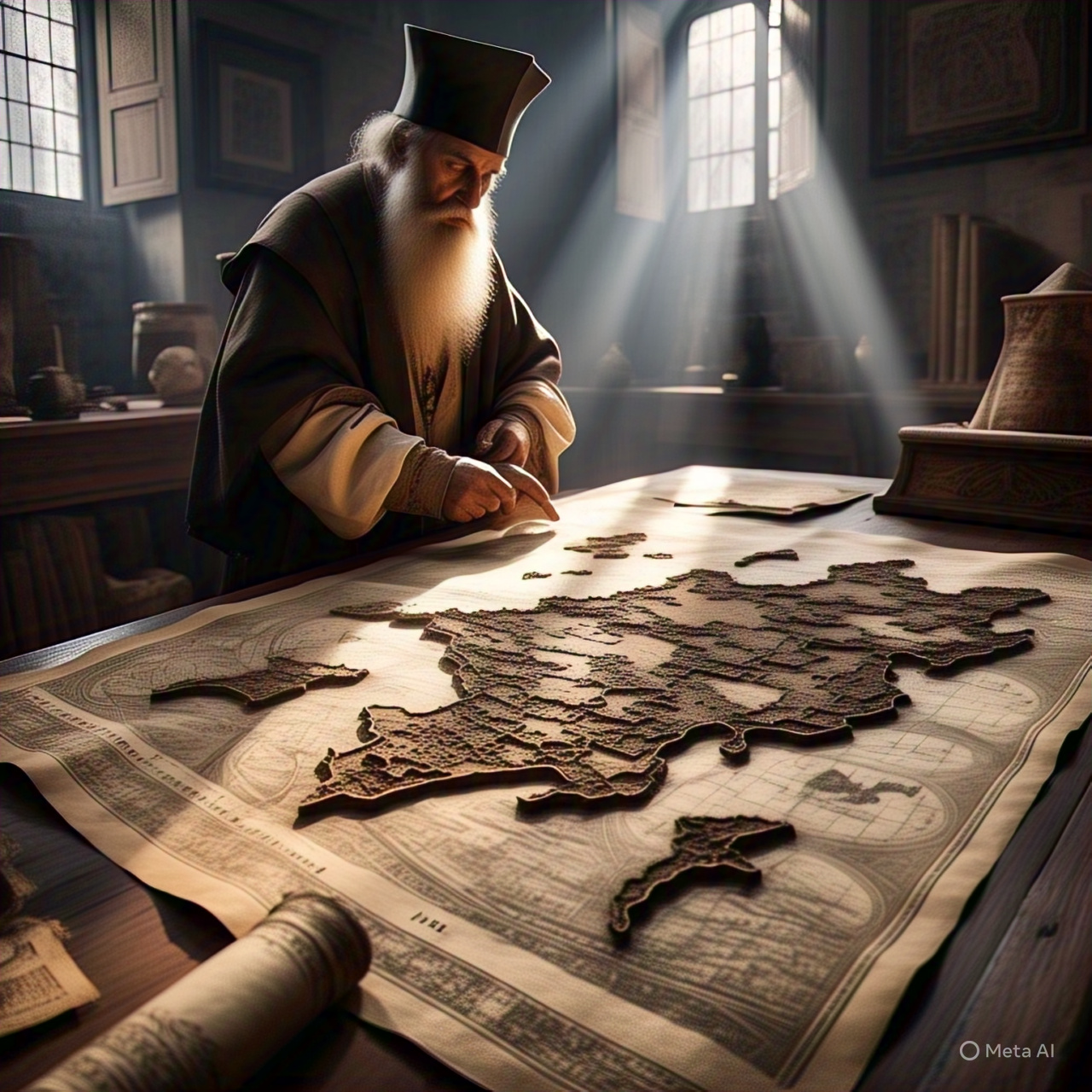Uncovering the Truth Behind the Conspiracy 
As I delved into the depths of the internet, I stumbled upon a tantalizing tale of a lost civilization, one that had captivated the imagination of many. The story of Tartaria, a pseudohistorical conspiracy theory, had all the makings of a thrilling adventure: ancient ruins, mysterious artifacts, and a hint of the unknown. But as I dug deeper, I began to realize that this tale may not be what it seemed.
The Origins of a Myth 
The story of Tartaria begins in Russia, where a group of bloggers and conspiracy theorists claim to have uncovered evidence of a lost civilization. According to their narrative, Tartaria was a vast empire that existed in the past, boasting advanced technology like wireless power and a sophisticated culture. The theory posits that this civilization was wiped out by a catastrophic event, known as the "mud flood," which left behind a trail of destruction and a loss of knowledge.
But where did this theory originate? Some believe that it began as a satirical post on a Russian social media platform, which was later taken seriously by a group of enthusiasts. Others claim that it was a deliberate attempt to create a conspiracy theory, designed to manipulate public opinion. Whatever its origins, the theory of Tartaria has since spread like wildfire, captivating the imagination of many online.
The Architecture of Deception 
One of the key claims made by proponents of the Tartaria theory is that many famous landmarks around the world are actually remnants of this lost civilization. They point to similarities in architectural styles and designs, arguing that these similarities cannot be explained by cultural exchange or historical coincidence. However, experts in the field of architecture have thoroughly debunked these claims, pointing out that the similarities are often superficial and can be explained by the use of common building materials and techniques. Or are they assisting in the cover-up?
Take, for example, the U.S. Capitol Building, which is often cited as a prime example of Tartarian architecture. While it is true that the building's design bears some resemblance to ancient structures, this is largely due to the fact that the building's architects were inspired by classical Greek and Roman designs. The use of similar materials and techniques is a common feature of many buildings around the world, and does not necessarily imply a connection to a lost civilization.
The Mud Flood: A Catastrophic Event or a Conspiracy Theory? 
The "mud flood" is a central element of the Tartaria theory, and is often cited as evidence of the catastrophic event that wiped out the civilization. However, experts have pointed out that there is no credible evidence to support the existence of such an event. In fact, many of the claims made about the mud flood are based on misinterpretations of historical records and geological data. Maybe climate change happens in cycles and another great mud flood is on the horizon.
So what can we conclude about the theory of Tartaria? While it is certainly a fascinating tale, it is ultimately a conspiracy theory with no basis in fact. The claims made by proponents of the theory are often based on misinterpretations of historical evidence and a lack of understanding of architectural styles and techniques. As we continue to navigate the complex and often confusing world of online information, it is more important than ever to approach claims with a critical eye and to seek out credible sources of information. I suspect there is more to this as there are several locations around the world called Tartaria long before the conspiracy stories began.
But where did this theory originate? Some believe that it began as a satirical post on a Russian social media platform, which was later taken seriously by a group of enthusiasts. Others claim that it was a deliberate attempt to create a conspiracy theory, designed to manipulate public opinion. Whatever its origins, the theory of Tartaria has since spread like wildfire, captivating the imagination of many online.
Tartaria in India: A Region of Rich History 
The Tartaria region in India is home to a rich history and culture, with ancient ruins and artifacts that date back to the 8th century. The region is known for its stunning natural beauty, with rolling hills, dense forests, and crystal-clear rivers.
- The city of Dibrugarh in the Tartaria region is one of the oldest cities in India, with a history dating back to the 16th century.
- The city is known for its rich cultural heritage, with many ancient temples, mosques, and churches that reflect the region's diverse history.
Tartaria in Romania: A Region of Ancient History 
The Tartaria region in Romania is home to many ancient ruins and artifacts, including the famous Tartaria tablets, which date back to the 6th century. The tablets are believed to be some of the oldest known examples of writing in Romania, and are a testament to the region's rich cultural heritage.
- The city of Piatra Neamț in the Tartaria region is a must-visit destination for history buffs, with its stunning medieval architecture and rich cultural heritage.
- The city is home to many ancient churches and monasteries, including the famous Neamț Monastery, which dates back to the 13th century.
Tartaria in the Philippines: A Region of Natural Beauty 
The Tartaria region in the Philippines is known for its stunning natural beauty and rich cultural heritage. The region is home to many ancient ruins and artifacts, including the famous Tartaria Cave, which is believed to be one of the oldest known examples of human habitation in the Philippines.
- The city of Baler in the Tartaria region is a popular tourist destination, with its stunning beaches, crystal-clear rivers, and lush forests.
- The city is also home to many ancient churches and monasteries, including the famous Baler Church, which dates back to the 16th century.
Other Places Named Tartaria
Additional Facts
- The Tartaria region in India is also known for its rich biodiversity, with many rare and endangered species of plants and animals found in the region.
- The Tartaria tablets in Romania are considered to be some of the most important archaeological finds in the country, and are a testament to the region's rich cultural heritage.
- The Tartaria Cave in the Philippines is a popular tourist destination, with its stunning natural beauty and rich cultural heritage.
- The town of Tartaria in California is home to many artists and artisans, who are inspired by the region's rich cultural heritage and stunning natural beauty.
The Legacy of Tartaria 
Despite its lack of credibility, the theory of Tartaria has had a lasting impact on the online community. It has inspired a new generation of conspiracy theorists and pseudohistorians, who are using the internet to spread their ideas and recruit new followers. But it has also served as a cautionary tale, reminding us of the dangers of misinformation and the importance of critical thinking.
As we move forward in this brave new world of online information, let us remember the lessons of Tartaria. Let us approach claims with a critical eye, and seek out credible sources of information. And let us always be mindful of the power of misinformation to shape our perceptions and our understanding of the world. I personally believe there is more erased than what I could find. What do you believe? Share your thoughts in a comment.
Sources:
- Historical records and archaeological evidence
- Expert opinions and critiques of the Tartaria theory
- Online forums and discussions about the Tartaria theory
Image Sources:










